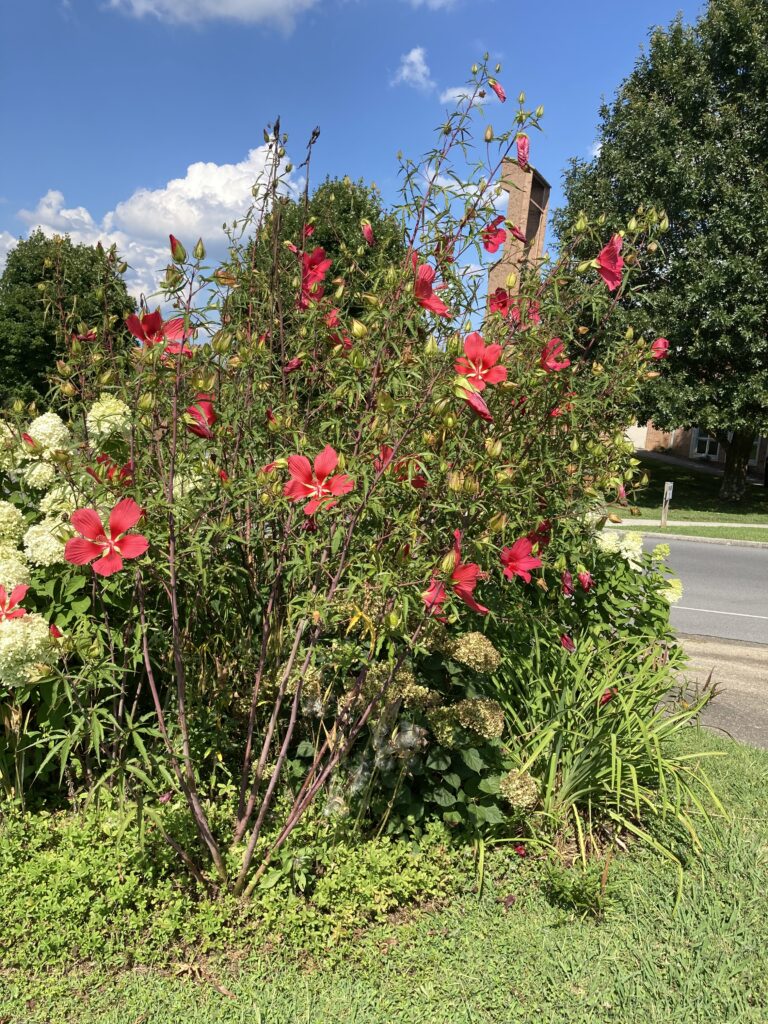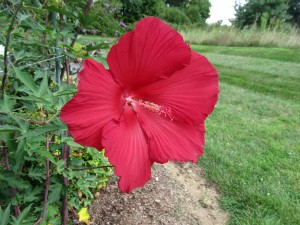Swamp mallow, aka swamp hibiscus (Hibiscus coccineus) is native to marshes and swamps in South Carolina, Georgia, Alabama, and Florida (USDA hardiness Zones 6 to 9). Vibrant red flowers cover the tall 4–8-foot plant(s) from June through September. Space plants 3 feet wide apart. Deeply cut maple-like foliage presents a lush tropical look and the brightly colored blooms attract hummingbirds and numerous species of butterflies.
Flowers are supported on sturdy beet red and purplish woody stems. The 5-6 inch wide leaves are very hemp-like*, palmately compound, and dark green. Flowering period is long and the showy red flowers become more vibrant with the arrival of cooler weather in very late summer. Most flowering ends at the start of autumn.
It grows best in full to partial sunlight. Shade grown plants become weak and leggy with less flowering; they tend to require staking in shady areas. This native perennial thrives in average moist garden soils. Sunny, hot, wet warm weather revs up its growth rate. Submerge a large container in your water garden. The wetter the site, the taller it grows. A rain garden is another site possibility with backup irrigation called for.
In early summer (and no later), fertilize plants to spur growth and darken foliage. Swamp mallow is borderline winter hardy in Zone 6. Grow in a leeward protected area and protect the plant crown with a loose non-smothering organic mulch over the winter. Overcrowded plants are susceptible to a number of pest and disease problems. In areas plagued with hibiscus sawflies and Japanese beetles, be prepared to spray with carbaryl (Sevin®), malathion, or imidacloprid (Bayer Advanced Insecticide®). Deer tend to leave swamp mallow alone.
* explain to friends and neighbors that swamp mallow is not marijuana.



 Posted in
Posted in 
